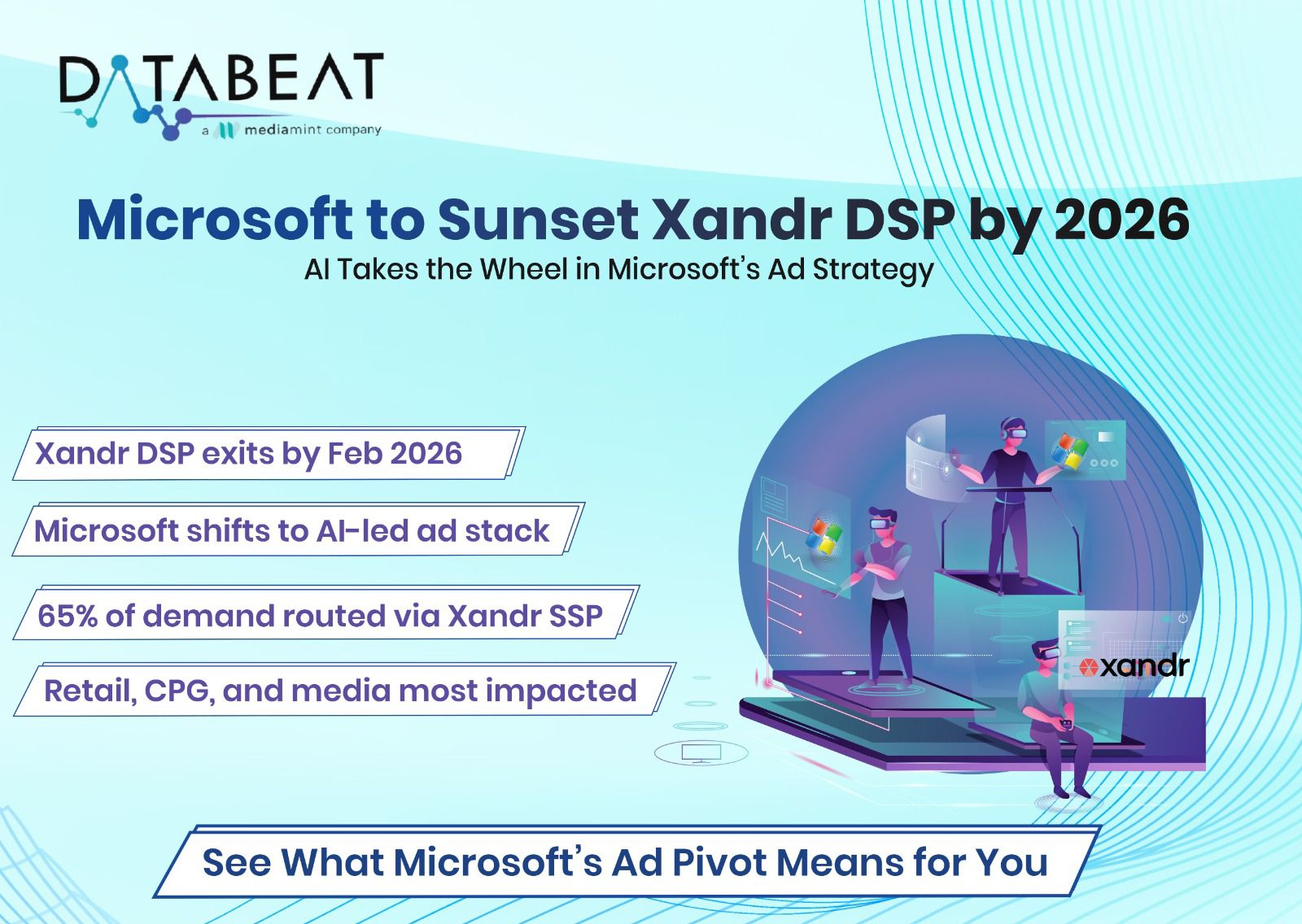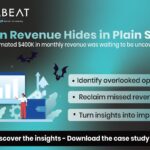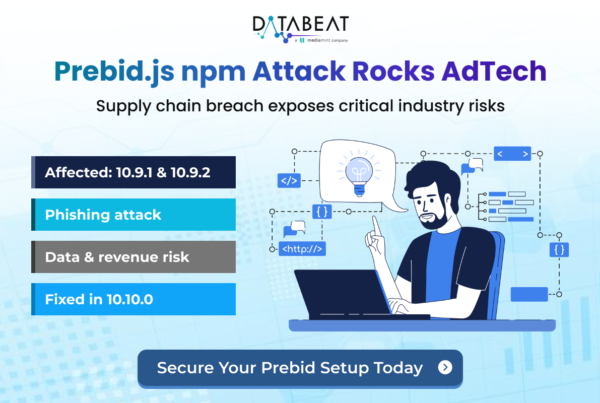
Microsoft has made it official that it would be phasing out its Demand-Side Platform (DSP), Xandr Invest, by February 2026. The decision is an extension of a larger strategy to concentrate ad operations and move towards AI-powered, in-house solutions within the Microsoft Advertising umbrella. The reason behind this decision is to increase transparency, efficiency, and data consolidation by drawing its ad tech stack nearer to its in-house products.
Present Market Status of Xandr DSP
Xandr, once AppNexus, has been a major entity in the programmatic advertising industry, especially in open web display, video, and connected TV (CTV) acquisition. Following its 2022 acquisition by Microsoft, it existed as an independent platform (Xandr Invest) for media purchasers and brands.
Even with a healthy reputation, Xandr has seen growing pressure from powerful DSPs such as The Trade Desk, Google DV360, and Amazon DSP, particularly as the industry trends toward integrated, privacy-focused solutions.
Market Share Breakdown (Pre-Sunset):
- 6–8% of open web display ad spend
- ~5% in programmatic video
- 3–4% in CTV
Though not a market leader, Xandr provided a credible alternative for advertisers who wanted to play outside of closed ecosystems owned by Google and Amazon.
Why Is Xandr DSP Being Shut Down?
Microsoft’s decision to sunset Xandr Invest is driven by a strategic vision rather than a response to market pressures. Several key factors contributed to this shift:
First, consolidating platforms allows Microsoft to reduce fragmentation in its ad stack, enabling better integration with first-party data from services like Bing, Xbox, Outlook, and Teams. Additionally, Microsoft’s focus on AI-driven innovation aims to create smarter, more automated ad-buying solutions. The industry’s increasing demand for transparency, scale, and closed-loop measurement makes it clear that unified, in-house systems can outperform legacy DSPs.
Xandr DSP: A Benchmark in Programmatic Advertising
DataBeat’s February 2025 U.S. Programmatic Trends report listed Xandr DSP as the second-best DSP by CPM, the second-best result for its high performance and competitive price in the programmatic advertising market.
CPM Benchmarks by Inventory Type for Xandr and Industry:
| Inventory Type | Xandr CPM | Industry CPM |
| Display | $1.50 | $1.10 |
| Video | $2.50 | $2.80 |
| Connected TV (CTV) | $9.00 | $11.50 |
Xandr’s CPMs are a bit higher than the industry average for display, but a little lower for video and CTV. These prices placed Xandr DSP competitively against other DSPs available in the market, with competitive pricing across different inventory types.
Demand Allocation and SSP Partnerships:
Xandr DSP showed a strong inclination toward using its own supply-side platform (SSP), Xandr Monetize. Around 65% of its demand was routed through its own SSP to have more control over the quality of inventory and pricing. The remaining 35% was routed to other SSP partners, which shows a balanced strategy to draw inventory.
This approach not only optimized performance but also showcased Xandr DSP’s determination to stay transparent and efficient in its operations.
Impact on Advertisers
Advertiser Categories Utilizing Xandr DSP (Estimates):
Although precise spending allocation may differ, past usage patterns tell us:
- Retail & eCommerce: ~35% of Xandr spend (on dynamic product ads and retargeting)
- CPG (Consumer Packaged Goods): ~20% (utilizing video and CTV formats)
- Entertainment & Media: ~15%
- Auto, Finance, and Tech: ~30% combined
Advertisers in these categories might experience short-term disruption, especially those utilizing Xandr for cross-channel reach. Microsoft is, however, steering customers toward Microsoft Invest, its successor platform with more penetration and AI-driven planning tools.
What Xandr’s Exit Means for Other DSPs
With Xandr’s exit, several competitors are poised to capture a share of the market. The Trade Desk, with its focus on transparency and the open web, is positioned to attract advertisers seeking alternatives to walled gardens. Google DV360, already a dominant force in programmatic buying, will likely absorb some of the spend from brands seeking stability. Amazon DSP is expected to attract retail and commerce-driven brands due to its strong first-party shopper data. Additionally, DSPs like Yahoo and MediaMath may see increased demand from advertisers seeking greater control and flexibility beyond Google and Amazon.
Smaller, vertical-focused DSPs that prioritize privacy-compliant solutions or vertical-specific buying may also seize this opportunity to fill the gap left by Xandr’s departure.
What Does It Mean for Publishers?
For publishers, Xandr’s exit presents both challenges and opportunities. On one hand, Xandr served as a neutral intermediary, offering a counterbalance to Google’s dominance, particularly in header bidding. With the transition to Microsoft Monetize, publishers who were previously using Xandr’s sell-side platform will now move to Microsoft’s platform, which offers closer integration with Microsoft’s broader data ecosystem. This shift could lead to better yield optimization, as improved AI capabilities and data alignment may result in higher fill rates.
However, there may be growing concerns about reduced interoperability and the increasing reliance on closed ecosystems, particularly for open web publishers who prefer more flexibility in their ad tech partnerships.
What Does It Mean for Microsoft?
For Microsoft, this transition marks a significant shift in its advertising strategy. As the company moves away from the standalone Xandr DSP, it is consolidating its advertising efforts into a unified ecosystem. Advertisers and publishers are being asked to switch to Microsoft’s new set of platforms:
- Microsoft Invest (buy-side platform)
- Microsoft Monetize (publisher monetization)
- Microsoft Curate (private marketplace management)
Transitioning to a Unified Advertising Ecosystem
This integrated stack aims to streamline media buying, create deeper connections within Microsoft’s suite of products, and provide centralized campaign support. These changes are crucial in an era dominated by privacy regulations, AI, and the increasing importance of first-party data.
Conclusion: The End of Xandr, The Rise of Microsoft AI Advertising
Xandr Invest, a one-time beacon of stand-alone programmatic creativity, is being gradually sunsetted in favor of a more centrally controlled and AI-fortified Microsoft universe. Although its departure leaves a void—particularly for mid-market buyers and publishers—it represents a strategic shift for Microsoft as it doubles down on ownership of data, automation, and platform harmony.
The online advertising market is quickly concentrating, and Microsoft’s bold action is an indication of an era where data platforms, not open intermediaries, shape the rate of innovation.









